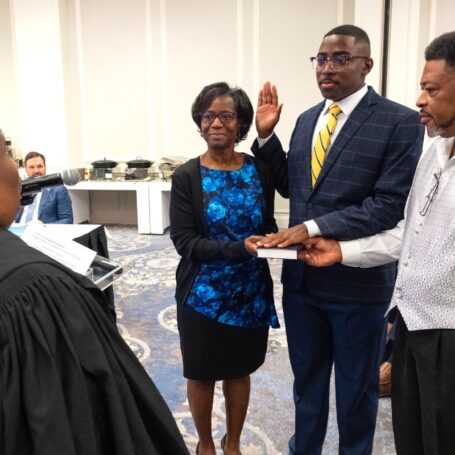Please Sweat the Small Stuff (When Working for Student Success)

The FAFSA may be free, but no one will confuse it with being easy.
The turn-of-the-millennium mantra of ‘Don’t sweat the small stuff’ is exactly the wrong message for ensuring that American students both get to college and thrive once there, says a leading educational researcher. “Small things,” explains Bridget Terry Long, the Saris Professor of Education and Economics at the Harvard Graduate School of Education, “can make a really big difference. Small barriers … can be humongous show stoppers.”
The particular show stoppers in Long’s sights come from systems designed to assist students on their academic trajectories which instead retard or reverse that progress. Many of these kids – and especially those from poor families and/or the first in their family to go to college – have already invested a lot of labor and love just to have their efforts derailed and their potential untapped.

Bridget Terry Long is an economist at the Harvard Graduate School of Education. Her work focuses on college student access and choice and the factors that influence students’ post-secondary and labor market outcomes .
“Sometimes,” Long told a Los Angeles audience Wednesday night, “we see that that hard work does not pay off.”
One small thing she discussed was the FAFSA – the ubiquitous Free Application for Federal Student Aid form that is the starting place for any American student seeking financial aid to attend college. Merely making that cumbersome form simpler and shorter saw enrollment increase by 29 percent (with a carry-on effect for students remaining in school).
Long’s talk was the third Centennial lecture for the American Educational Research Association, which continues to celebrate its 100th anniversary in 2016 with six free lectures by major researchers addressing current educational issues at venues around the United States. Upcoming talks are in Oklahoma City, Detroit and Boston.
In setting up her prescriptions for sweating the small stuff, Long, an economist, drew heavily from her own research on economically disadvantaged students. She also took care to note that today’s “neo-traditional” college student is not necessarily a dewy-eyed 18-year-old; 47 percent of these receiving Pell Grant– the basic building block of federal aid to needy students — are 24 or older. And of course, she noted that merely getting a student to enroll is just the start of the battle, not the victory. Low income is just as much a factor in “persistence,” as remaining in school is termed, as it is in enrollment.
(The architect of the program, Senator Claiborne Pell, said of the 1972 legislation creating the grants: “It establishes by law the right to a postsecondary education for all of our nation’s citizens…no longer will higher education be the province of some of us—it will be a birthright of all.” And yet, every year hundreds of thousands or even millions of students eligible for Pell grants don’t even apply for them.)
Long also set scene on the price of not going to college, from hard costs like lower lifetime earnings and lower life expectancy to less-talked-about but still measurable activities like less time spent with children and less time volunteering.
She outlined three broad areas where institutional factors impair a college student’s access and success — affordability, academic preparation, and information accessibility. Long noted that tuition at two- and four-year institutions has increased at two to three times the growth in median family income, and cited estimates that only a third of high school graduates are academically ready for university-level scholarship. Given the large amount of research on those type of topics, Long’s third point was the most intriguing: there’s already lots of information for prospective students and their parents. Long is fearful that often there’s too much information and that overwhelming firehose of well-meant tips is just as off-putting as info that is bad or incomplete. And that’s assuming parents even know how to navigate to it or amid it. Proactive outreach is key: “If you [just] build a website they’re probably not going to come.”
Long herself has given up on panaceas: “I did a lot of work thinking financial aid was the silver bullet,” she explained, before realizing that so many other issues, including but not limited to preparation and accessible information, were important.
The lecture nonetheless closed with four suggestions for addressing these challenges – changing the infrastructure to make it easier to navigate the confusing world of college entrance and financial aid; using personalized data to help overcome application-phobia; being thoughtful about how to deliver necessary information to first-timers; and having those in the business of helping focus on the personal needs of applicants and not their rote requirements.

The lecture included a discussion featuring Long and three education advocates from Southern California in a discussion moderated by Adolfo Guzman-Lopez of Southern California Public Radio. You can watch the entire event below.
Upcoming Centennial lectures include:
Deborah Lowe Vandell, University of California, Irvine | “The Opportunities and Challenges of Early Child Care and Education,” February 22, Oklahoma City (Register here)
Charles Payne, University of Chicago |“The Limits of Schooling,the Power of Poverty,” March 23, Detroit
Russell Skiba, Indiana University | “School Discipline: Issues of Equity and Effectiveness,” April 12, Boston






















































































